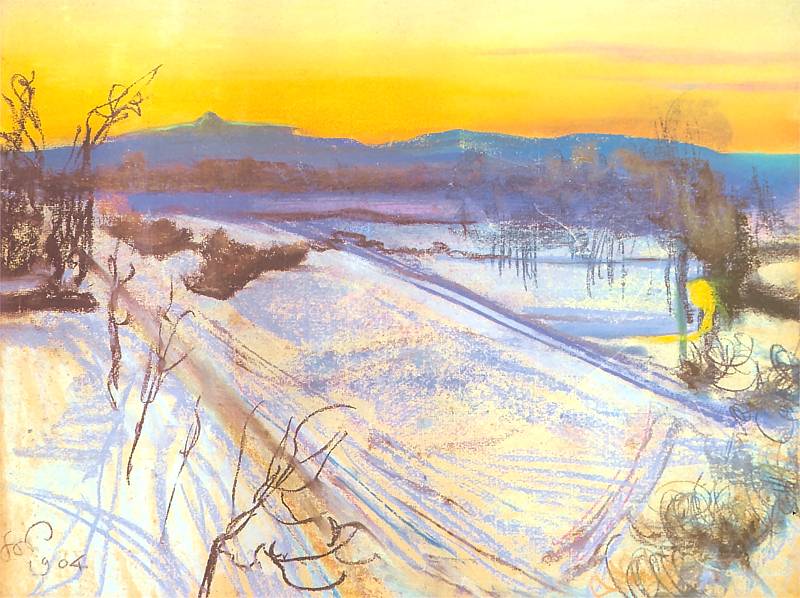Looking through the Polish landscape paintings in Warsaw’s Muzeum Narodowe there are examples of topography, Claudian idyll, the sublime (a dramatic Mountain Landscape with Waterfall (c1820) by Franciszek Ksawery Lampi), Impressionism, Symbolism... It’s difficult to get very excited about some of these and perhaps a Polish visitor to Britain would feel the same about paintings by, say, Richard Wilson. There seems to be more scope for unfamiliar artists to leave a distinct impression when you reach the late nineteenth century, even when they’re relatively derivative, e.g. Józef Pankiewicz’s striking Whistler-style Nocturne – Swans in the Saski Garden in Warsaw at Night, 1894. I am thinking here in particular of the pastel landscapes drawn by Stanislaw Wyspianski (1869-1907), like his View of Kósciuszko Mound, Krakow (1905). These have a certain calm harmony but at the same time a creeping sense of unease in the slightly discordant colours and shadowy, skeletal trees; you have a sense of someone trapped in their studio and looking out with a sense of quiet desperation.
Stanislaw Wyspianski is actually much better known as a writer and ‘founder of modern Polish drama’, so has much in common with that other painter of strange landscapes, August Strindberg. The excellent Adam Mickiewicz Institute which I visited in Warsaw has an article about him. (Incidentally, among the fascinating artefacts on display at the Institute was a volume of Byron poems given with a dedication by Mickiewicz to his friend Pushkin – ah, heady times...) There is a Wyspianski museum in Krakow and an image of one of the pastel landscape views at a Katowice museum site.
Stanislaw Wyspianski, View of Kósciuszko Mound, Krakow (1905)
Source: Wikimedia Commons
Postscript, July 2023
We have just been to Krakow and from its royal castle, the Wawel, were able to look over the river and beyond the city centre to the distant Kósciuszko Mound (see first photograph below). Intrigued to see it up close, we took a tram and climbed a hill until we emerged at what appeared to be a nineteenth century brick fortress. Rising above its walls was the mound itself, a monument to Polish national leader Tadeusz Kościuszko. With its artificial shape and winding path it looks like a work of land art or something Charles Jencks might have considered for his Garden of Cosmic Speculation. As you can see below, the Ukrainian flag, yellow and blue like Wyspianski's drawing, was flying alongside two Polish ones.



1 comment:
Realizing that it is probably not the kind of thing you would like to get involved in I couldn't resist mentioning your blog in this post . Mainly because I would like others who might like your posts as much as I do to be aware of it.
Post a Comment